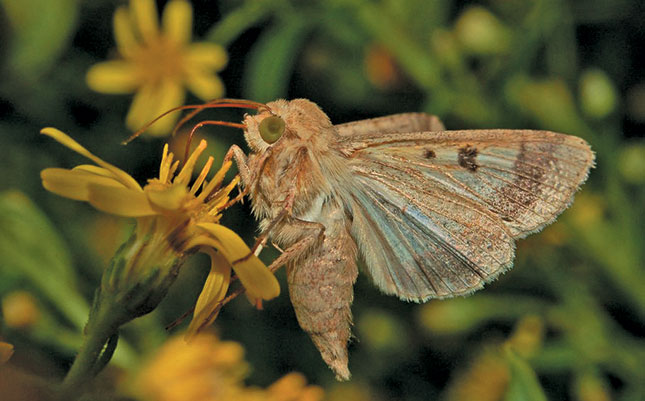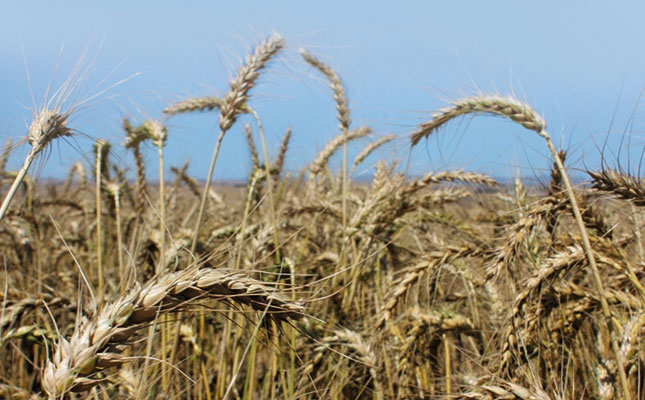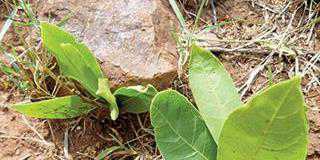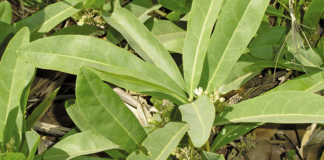
The most common tomato pests in South Africa are root-knot nematode, cutworm, bollworm, army worm, leaf miner, thrips, red spider mite and aphids.
Cutworm
This is the greyish, hairless caterpillar (larva) produced by moths such as Agrotis segetum. It is often troublesome in the seedbed and a threat to newly transplanted tomatoes. At night, the caterpillar bites through the seedling just above the ground, severing it from its roots – hence the name ‘cutworm’.
Cutworms are usually found near a damaged plant 2cm to 5cm below the soil surface. The best way to reduce their numbers is to keep the land free of weeds before planting. Start weed control six weeks before sowing or transplanting.
Other caterpillars that feed on tomato plants are loopers, semi-loopers, bollworms, lesser armyworm and Spodaptera larvae. The moths fly in from the surrounding area at night. Fortunately, many insecticides are registered to combat these pests. If only a few caterpillars are present, they can be removed by hand.
Tomato rust mite
This tiny pest, only 0,2mm long, feeds on stems and leaves. The first sign of damage is that the lower leaves curl up. Infected leaves appear bronzed, and later wither and die.
Red spider mite
Less than 1mm each, this tiny, red-brown pest penetrates plant cells and sucks up the chlorophyll in leaves. Red spider mites generally remain on the underside of the leaves but in a severe infestation may appear over the entire plant. Fine webbing may be visible between leaves and the leaves may turn light yellow. Infected plants sometimes die and those that survive produce little fruit. These mites prefer dry, hot conditions. Various insecticides are registered for control of mites on tomatoes.
Whitefly
These small, white sucking insects are sometimes seen flying around the plant when the leaves are disturbed. The wings and bodies of the adults are covered with a fine white powder. The pest gathers in large numbers under the leaves, sucking the sap. Whiteflies can also introduce harmful viruses into a land. They can be controlled with insecticides, and seedlings can be protected with a mesh cover.
Liriomyza leaf miner
This is the larva of a 2mm fly that has a bold yellow dot between its wings. The female lays its eggs in a small puncture mark on the leaf.
The larva creates long, thin tunnels while feeding inside the leaves. Heavy infestation damages the foliage to such an extent it reduces fruit set and results in sunburn to ripening fruit.
Aphids
Aphids are 1,5mm- to 2,5mm-long insects ranging in colour from green to black. They prefer to hide under the leaves or congregate near the growth points of a host plant. They suck up the plant sap, and can cause even more damage by transmitting plant viruses.
Bollworm
This is the offspring of a night-flying moth that is dull yellow to brown in colour. Fully-grown larvae are about 30mm to 40mm long. Young caterpillars are hairy and their colours vary from black to brown-beige. They feed on flowers, leaves and the fruit of tomatoes. Later, they may feed inside a hollowed-out fruit. Nearly 30 insecticides are registered against bollworm on tomatoes.
Potato tuber moth larva
This tiny, light-coloured caterpillar bores into unripe and ripe tomatoes, starting where the stem is attached to the fruit. This causes the fruit to rot. A tiny black ring usually indicates the entry point. The infected fruit is unmarketable and infected lands must be destroyed by burning after harvest. Insecticides can control tuber moth larvae in tomatoes.
Nematode
A nematode is a microscopic worm that causes large lumps or galls on a plant’s roots. These result in low yield, stunted plants, and wilting of the top growth. The best management is to use newer, nematode-tolerant cultivars, and rotate with other crops.
Growing marigolds (Tagetes spp.) reduces nematode numbers in infested soil within one season, but a single replanting of tomatoes on the same land may see nematode numbers build up again.
Several nematicides are registered for nematode control on tomatoes. You can also prevent nematode infestation by practising fallow ploughing.
Source: Production Guideline for Summer Vegetables, Agricultural Research Council.













